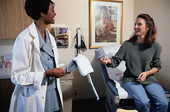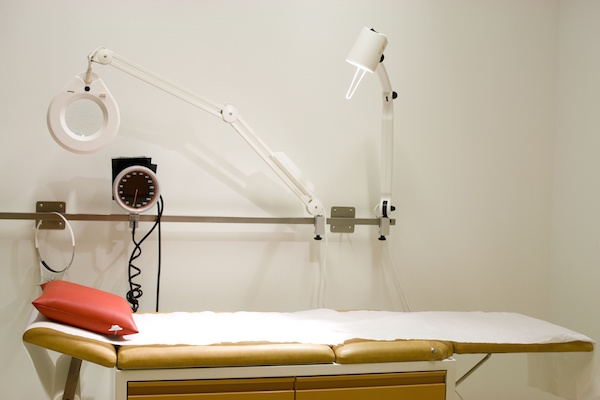
MONDAY, Nov. 9 (HealthDay News) — Family doctors are now taking more time consulting with adult patients, seeing them more often and improving the quality of visits, a new study suggests.
“Patients spent more time with their primary care physicians during office visits in 2005 than they did almost a decade earlier, and overall they seemed to receive better care,” said Dr. Lena M. Chen, from the University of Michigan Health System, the lead researcher of a study reported in the Nov. 9 issue of the Archives of Internal Medicine.
Just as the U.S. health care system is struggling to improve care and lower costs, the researchers noted that the population is aging and doctor income is falling, leading some to worry that doctors might cut patient visits shorter to make up the short fall.
“Any efforts to increase efficiency in primary care should take into account the association between time spent with a physician and quality of care,” Chen said.
To find out if these factors affected the quality of care provided by primary care doctors, Chen’s team collected data on more than 46,000 visits to primary care doctors between 1997 and 2005.
They found that visits to primary care doctors increased 10 percent, from about 273 million visits in 1997 to 338 million in 2005. And the average duration of an adult primary care visit increased by 16 percent, from 18 minutes to 20.8 minutes, Chen said.
For regular check-ups, time with the doctor went up 3.4 minutes; for diagnosis of diabetes, the visit increased 4.2 minutes; for high blood pressure, 3.7 minutes, and for a diagnosis of joint disease, the visit lengthened 5.9 minutes.
Moreover, quality of care also improved according to nine medical, counseling and screening indicators used by the researchers.
Counseling or screening by doctors took 2.6 to 4.2 minutes longer than visits without these services. Providing medication was not associated with longer visits, the study found.
Office visits may be lengthening partly because doctors are seeing more older, sicker patients, the researchers said.
Also, patients are taking more responsibility for their care, which means longer visits, said Dr. Greg Sachs, professor of medicine and director of the division of general internal medicine and geriatrics at the Indiana University School of Medicine, who was familiar with the study findings.
“People are coming in with more questions, more information and an expectation to be more involved in making decisions about their care,” he said.
That means that doctors must work longer hours and see more patients to maintain their income, Sachs said.
Health care professionals “are looking for creative solutions to free up doctor time, and doctors are really working a lot harder,” he said. “Things like having nurse practitioners or physician’s assistants assist in the care of patients frees up physician time for more complex patients,” Sachs added.
Group visits — in which multiple patients with the same condition are seen simultaneously to discuss care and self-management — are another strategy, Sachs said.
But fewer people are choosing family medicine as a career, largely because of lifestyle and work demands, he said.
Improving quality of care will probably require wider use of electronic medical records and better reimbursement of family doctors, the researchers noted.
In another report in the same issue of the journal, research shows that the waits at emergency rooms have grown longer.
In 2006, one in four emergency patients waited longer to see a physician than recommended at triage, an increase from one in five in 1997, researchers found.
“Emergency departments are increasingly overcrowded, thereby straining resources,” write researchers from Yale University School of Medicine. “Triage assessment is intended to mitigate this strain by ensuring that the most acutely ill patients are prioritized for assessment, regardless of the competing demands on ED physicians’ time.”
Long waiting time does more than lower patient satisfaction, the team noted. It also limits access, causes patients to leave before being seen and, “is associated with clinically significant delays in care for patients with pneumonia, cardiac symptoms and abdominal pain,” they added.
More information
For more on making the most of your next visit to the doctor, head to the American Academy of Family Physicians.

